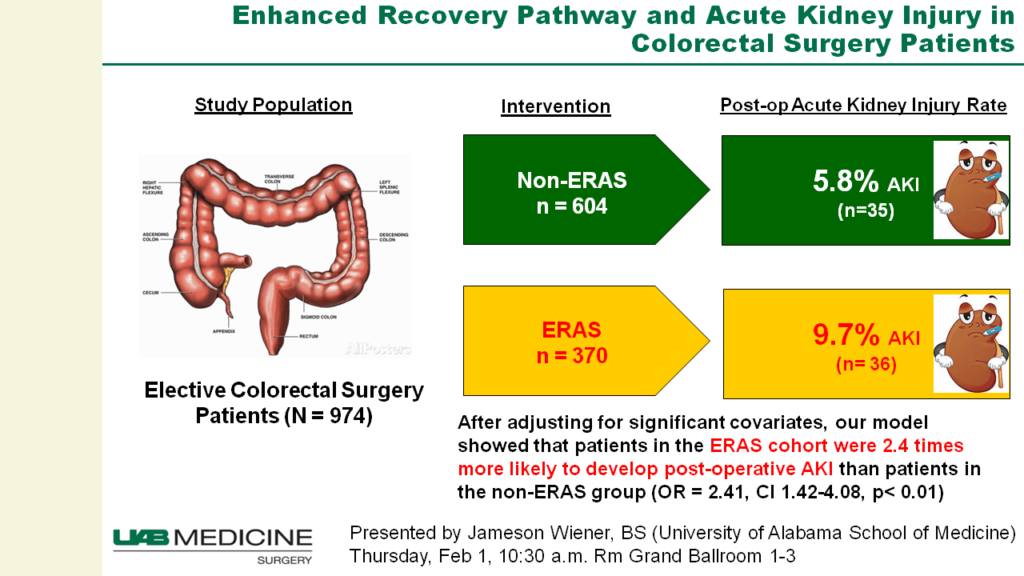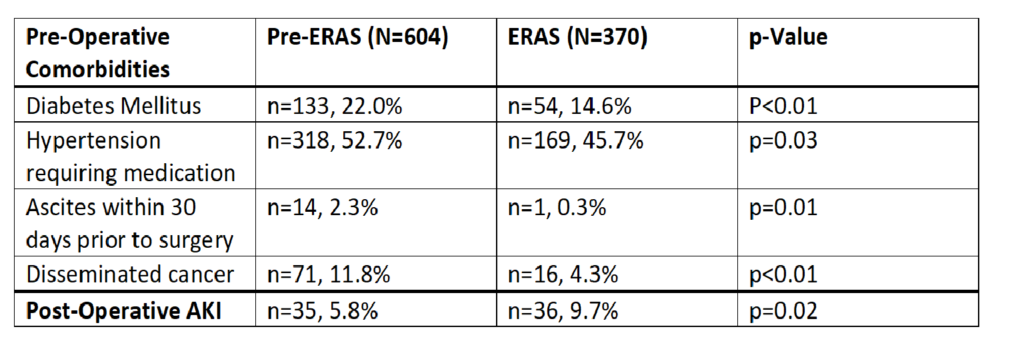P. L. Rosen1, D. J. Gross1, H. Talus5, V. Roudnitsky2, M. Muthusamy3, G. Sugiyama4, P. J. Chung3 1State University Of New York Downstate Medical Center,Department Of Surgery,Brooklyn, NY, USA 2Kings County Hospital Center,Division Of Trauma And Acute Care Surgery,Brooklyn, NY, USA 3Coney Island Hospital,Department Of Surgery,Brooklyn, NY, USA 4Hofstra Northwell School Of Medicine,Department Of Surgery,Hempstead, NY, USA 5Kings County Hospital Center,Department Of Surgery,Brooklyn, NY, USA
Introduction:
Full thickness rectal prolapse is a debilitating condition for which multiple surgical approaches have been described. Laparoscopic transabdominal approaches are frequently employed, but there is a paucity of data comparing outcomes between laparoscopic transabdominal rectopexy (LR) and laparoscopic transabdominal rectopexy with sigmoidectomy (LRS). Using the American College of Surgeons National Surgical Quality Improvement Program (ACS NSQIP) database, we compared outcomes between these two commonly employed modalities.
Methods:
Using ACS NSQIP 2010-2015, we identified cases in which LR (CPT 45400) or LRS (CPT 45402) were performed for a postoperative diagnosis of rectal prolapse (ICD 9 569.1). We excluded cases with missing sex, race, BMI, functional status, and ASA classification data. Outcomes of interest included length of stay (LOS), postoperative major morbidity (wound infections, pulmonary complications, cardiovascular complications, renal complications, sepsis/septic shock, bleeding, return to OR) and mortality. LR and LRS cases were matched using propensity scores. Matching diagnostics were performed and outcomes were evaluated using conditional logistic regression or the Wilcoxon rank-sum test.
Results:
We identified 1,397 patients of which 841 (60.2%) underwent LR and 556 (39.8%) underwent LRS. Patients undergoing LR tended to be older (mean 61.6 vs 55.8 years, p<0.0001), had lower rates of independent functional status (95.7% vs 98.6%, p=0.0072), had higher proportion of African American race (3.8% vs 2.5%, p<0.0001), diabetes treated with medication (7.3% vs 3.8%, p=0.022), CHF (1.31% vs 0.0%, p=0.0043), bleeding disorders (2.3% vs 0.72%, p=0.031), and ASA class 3 (39.6% vs 30.4%, p=0.0045). Unadjusted comparison between LRS and LR showed increased LOS (median 4 vs 2 days, p<0.0001), increased rates of superficial surgical site infection (SSI) (2.7% vs 0.6%, p=0.0019), bleeding (3.1% vs 1.3%, p=0.036), and sepsis (1.8% vs 0.5%, p=0.025). Propensity scores were then used to match 509 LRS to 509 LR cases with diagnostics showing that the groups were well-balanced across covariates. Conditional logistic regression demonstrated that LRS compared to LR had no statistically significant increased risk of 30-day postoperative complications or mortality. However LRS was associated with increased LOS compared to LR (median 4 vs 2 days, p<0.0001).
Conclusion:
In this large observational study utilizing a national clinical database we found no differences in 30-day postoperative outcomes between laparoscopic transabdominal rectopexy without sigmoidectomy versus laparoscopic transabdominal rectopexy with sigmoidectomy after propensity score matching. This suggests that long-term outcomes should dictate the choice between these two procedures.











